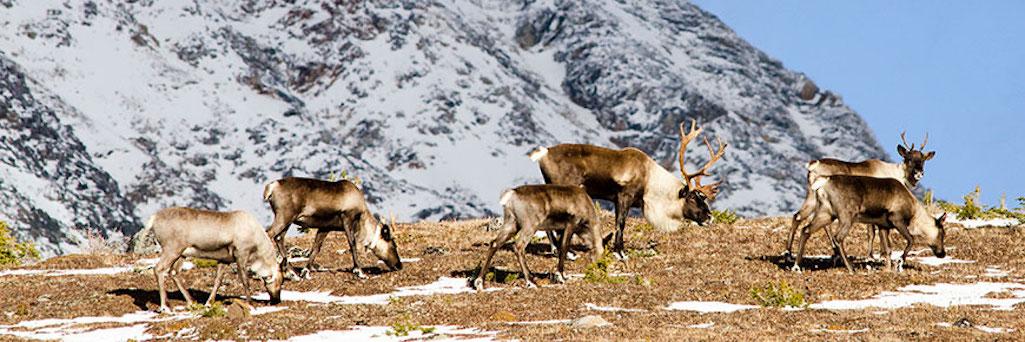
Extended seasonal closures in key areas of Jasper National Park this winter are intended to help caribou numbers rebound/Parks Canada
Seasonal closures intended to help build southern mountain caribou numbers in Jasper National Park in Canada will begin November 1 and run longer than in the past.
"Without action, the only two caribou herds remaining entirely within Jasper will disappear," Parks Canada said in announcing the closures to protect the Tonquin and Brazeau herds.
"It is important to increase our efforts to protect caribou in the Tonquin and Brazeau caribou ranges and to maintain the ecological conditions needed to support a potential conservation breeding program," the agency said. "New conservation actions include extending the seasonal closure in the Tonquin Valley from November 1 to May 15 and discontinuing private horse use in the Tonquin Valley."
This past summer, Parks Canada announced it hoped to see the caribou herds produce up to 20 calves a year and bring Jasper’s herds back to sustainable levels within a decade.
At the time, Jean-François Bisaillon, acting resource conservation officer at Jasper, said the park traditionally has four caribou herds. The À La Peche herd is the northernmost herd of 150 animals and is partially migratory in and out of the park. In the southern part of the park, usually south of the town of Jasper, the Maligne herd has been extirpated (it no longer exists in the wild). The Brazeau herd is down to about 15, and the Tonquin herd hovers around 45. These two aren’t large enough to be self-sustaining because they don’t have enough females who are reproducing.
Along with announcing the seasonal closures for the coming months, Parks Canada added that backcountry travel in the affected areas, which are considered critical habitat for caribou, will be banned between November 1, 2021, and May 15, 2022.
In addition to extending the dates of the seasonal closures in all occupied caribou ranges, there are changes to the closure boundaries in the Maligne and Brazeau caribou ranges:
- In the Brazeau caribou range, boundaries will be expanded on the west side of Highway 93 (in the Winston Churchill mountain range) to include areas where caribou have been observed in surveys and on remote cameras over the past five years.
- The Maligne caribou range will have no access restrictions because there is no evidence that caribou remain in the Maligne herd. If caribou are observed in the Maligne caribou range in the future, the closure will be reassessed and reinstated if appropriate. Critical habitat for caribou in the Maligne range remains protected under the Canada National Parks Act and Species at Risk Act. The northern portion of the Brazeau caribou range that was historically used by both Maligne and Brazeau herds remains closed.
For a full description of the closure areas and to view detailed maps of the seasonal closures, visit this website.
These new measures represent stronger protection for the Tonquin and Brazeau herds and increase the likelihood of successfully rebuilding caribou herds in Jasper National Park.
Following consultation and completion of an impact assessment, Parks Canada will decide whether to build a conservation breeding facility in Jasper National Park. If built, young animals born in the facility would be released into the wild Tonquin herd.
While Parks Canada has taken steps to reduce many of the threats to caribou and create better conditions for their survival and recovery, populations are now so small that they cannot recover on their own. When caribou herds get too small, the herds become more vulnerable to natural threats such as predators, disease, and accidents.
The current predation risk to caribou from wolves is low, but wolf distribution can change quickly and have large impacts on small caribou herds in a very short time. For example, until this summer, Parks Canada had not documented wolves entering caribou habitat at high elevations at any time of year since 2016. However, GPS collars on the Sunwapta wolf pack showed the pack spending time in the Tonquin caribou range this past August and September.
Jasper National Park has abundant habitat for caribou and ecological conditions are favorable to support caribou recovery, believes Parks Canada. Using information gathered from sightings, surveys, and GPS collars, the agency has confirmed that there are at least nine females in the Tonquin herd.
"We have also confirmed that three of these females are with calves born this spring, and there are likely four more pairings of cows and calves," it added. "This is a good indication that the Tonquin caribou are doing well despite their low numbers."



Add comment